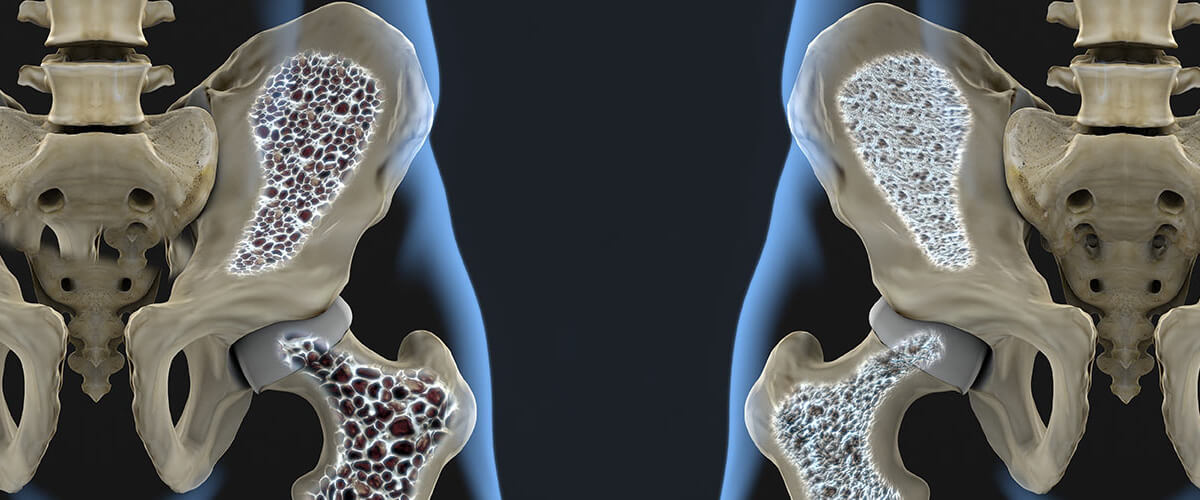
Osteoporosis is a silent disease that affects the integrity of your bone’s internal structure. The term osteoporosis means “porous bone.” When viewed under a microscope, healthy bone looks like a tightly formed honeycomb. When osteoporosis occurs, those holes and spaces have become much more extensive, indicating a loss of density that makes them both more fragile and susceptible to injury.
Most people don’t realize that bones are not solid rigid structures. Instead, each of our bones is part of a complex skeletal framework of living tissue undergoing a process of continual change called remodeling. We develop a strong skeletal system through the daily removal or resorption of bone mineral along with an equal deposit of new mineral. When this delicate balance of bone remodeling is disrupted, it can have an enormous impact on bone health and increase the risk of developing osteoporosis.
According to the International Osteoporosis Foundation, some of the factors associated with developing osteoporosis include:
Sally suffered from osteopenia, a condition where people’s bone density is lower than is usual for their age which can lead to osteoporosis. Sally tried working out and physical therapy, but it didn't seem to help her fatigue levels as a horse tender. She talked you her physical therapist about options and her therapist recommended OsteoStrong. Sally was skeptical at first but decided to give OsteoStrong a start. Within a few short weeks, Sally began to feel the affect that OsteoStrong was having on her health. She was able to work with her horses for longer periods without fatigue.
Sally is now a regular member at OsteoStrong and looks forward to her pain free sessions. OsteoStrong has enabled Sally to continue her passion.
After the age of about 30 years old, the average person naturally begins to lose bone density when bones lose the ability to rebuild at the same rate it breaks down. Women, in particular, face a higher risk of losing bone density as they age and enter menopause when hormone changes accelerate the loss of bone density.
Yes. Men are absolutely at risk of being diagnosed with osteoporosis. It is vitally important for them to communicate with their doctors about their skeletal health. While it is true, men don’t experience hormone-related bone mass at the same rate as women experiencing menopause; bone loss accelerates as men age.
By around the age of 60, men begin to lose bone mass at the same rate as women. Once over 60, both men and women also experience a decrease in their ability to absorb calcium, an essential nutrient for bone health.
According to the National Institutes for Health, there are several risk factors for men, including:
The most common test used to measure bone mass density, according to the International Osteoporosis Foundation, is a DXA scan or dual-energy X-ray absorptiometry. The test is painless and much like an x-ray, but without the same level of exposure to radiation. It can measure small incremental changes in bone density throughout your body but is most often used to measure BMD in the hip and spine.